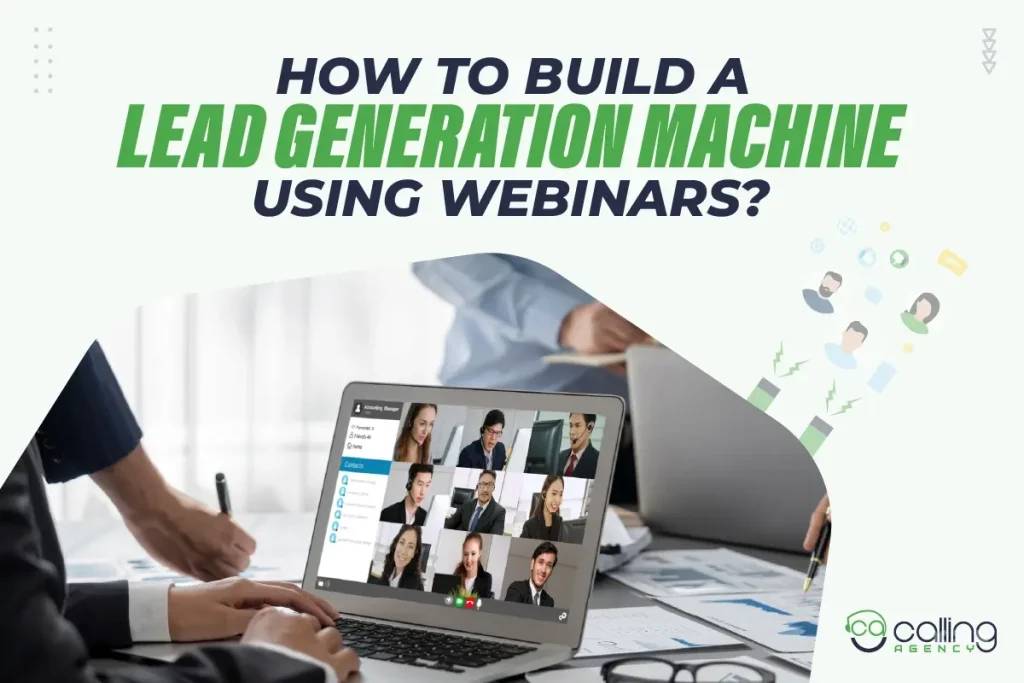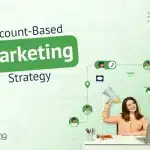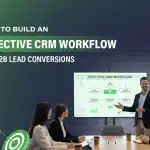Sick of empty webinars? Always get low sign-ups? Fewer sales? The hard truth is- you are attracting the wrong crowd, and you are not following up properly. Also, your leads go cold quickly.
You might not know- you don’t need more people, so dont count the number! You only need the right people who will be your lead, who will be your paying customers! The good news is, you can turn webinars into a lead machine. Thus, you can sell more even without big ad bills.
Let’s go through our guides about what is webinar lead generation, and how to proceed with it! Don’t miss this session if you want more sign-ups, more leads, and more sales!
What is Webinar Lead Generation?
Webinar lead generation is one of the most valuable strategies to generate leads through online seminars or webinars. Webinar marketing involves promoting and managing these online events to attract the right audience. Usually, business people provide relevant, valuable content on their online events (which we call webinars) to attract attendees in a different but valuable way.
The ultimate goal of a webinar/seminar is to collect attendees’ contact details (i.e., name, email, phone no, job title) for future marketing or sales efforts. That means to get in direct touch and to get the details of the potential customer (or a lead) who has shown interest in your product or service.
Webinar lead generation process works through-
- Valuable content
- Attendee engagement
- Lead capture
- Nurturing of the leads
- Converting leads into customers
Webinar marketing guides each step (here) to attract the right audience, keep them interested, and in the future turn them into your paying customers.
Why Are Webinars a Powerful Tactic for Lead Generation?
You know one thing? When you share anything with rich info, or you share anything related to educating the people, or to make them Knowledgeable, it is comparatively long lasting. And this way hits directly to the cautious people!
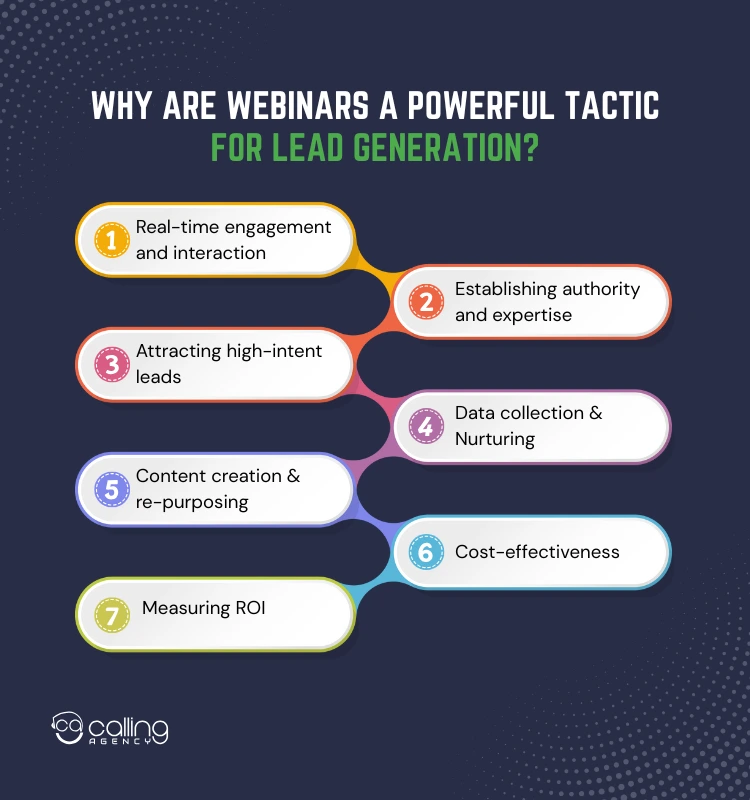
However, webinars are a powerful tactic because this strategy or process that you want to address, allows a direct engagement with your target audiences/customers. Moreover, you can showcase your expertise here, and also can share all related & valuable content with your targeted people.
When you are in a direct conversation (whether online or offline), well, you can easily get your audience’s pain points and can demonstrate your business value to deal with those pain points. Ultimately, this whole process helps you to acquire audience trust, and finally to generate high-quality leads.
Here is a breakdown of why webinars are effective for lead generation.
Real-time Engagement and Interaction:
Webinars practically open a new door to an interaction with the targeted people in real time. Here, both the audience and the business people take part in question and answer ,in various workshops-which ultimately fosters a nice community building. It helps to understand the audience’s needs quickly and easily.
Establishing Authority and Expertise:
Usually in any online seminars, people share their insights, trends, solutions, etc. Thus, you also establish yourself as a thought leader to build credibility in your industry. Overall, it helps all potential customers to see your business as a good source anda good solution provider.
Attracting High-intent Leads:
Leads with a high interest in solving their problems generally show interest in webinars. And after the session is nearly over, these active leads are converted into paying customers. To attract such potential leads, you only need to select the relevant topic and deliver those through high-quality quality practical content.
Data Collection & Nurturing:
A webinar platform lets you be able to collect your attendees’ contact information, such as their email address, phone number. So with these, you can nurture your potential leads and follow up with them after the end of your event. You can make your customer segmentation based on this data, and can handle them in a more personalized way too.
Content Creation & Re-purposing:
The content you make for your webinar project can also be used by others. This content can be repurposed for your marketing purposes, for your blog channel, social media updates even for your email marketing campaign too. Thus webinars indirectly help you to extend your reach and to hit your targeted customers deeply.
Cost-effectiveness:
Webinar lead generation process is one of the most cost-effective ways to lead generation. Others lead generation processes like paid advertising, in-person events ,pull more dollars from the business person.
Measuring ROI:
Webinars often allow you to track registration rates, attendance, and engagement key metrics from several analytics tools. So you can easily measure your webinar campaign ROI from these records. Ultimately, you can refine your future/next webinar strategies to get more potential leads.
How to Generate Leads From Webinars
Webinars are a great way to attract people, to get closure with them, to build trust, and to grow your list of quality leads. Even all these leads are not ready to buy any thing from you, still good webinar can start a relationship that leads to future opportunities.
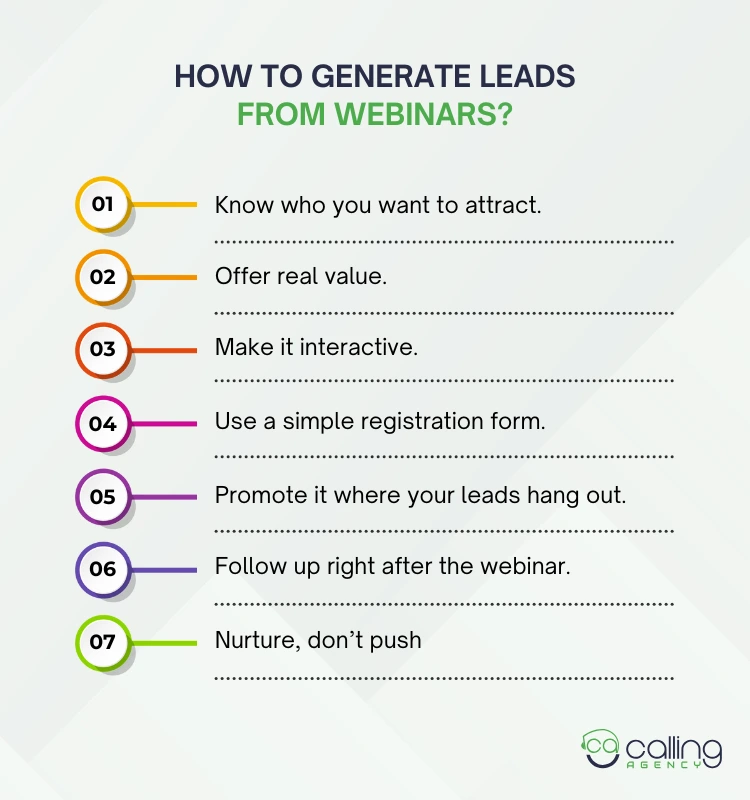
However, the thumb rule to generate leads from webinars is-
- Know who you want to attract.
- Offer real value.
- Make it interactive.
- Use a simple registration form.
- Promote it where your leads hang out.
- Follow up right after the webinar.
- Nurture, don’t push
Besides all these-also you have to choose a compelling webinars Project, you have to promote the registration process,and promote your webinars project (early and consistently). Also, leveraging interesting features will make the audience more engaged with your site.
Here is a more detailed version-
Before the Webinars: Attract the Right Audience:
To get quality leads, you first need to attract the right people. So start by targeting the right person for your product/service.
- Target your ideal customer: Identify your specific audience set who is interested in your business and can convert into your potential paying customer.
- Choose a perfect topic: A compelling topic will address your audience needs/ pain points -thus it will convert your audience into your successful leads.
- Make a strong registration page. Make it easy for your audience to sign up for your webinar project. Include a clear value proposition and a clear but short brief about the webinar project. Also, include a call to action option.
During the Webinars: Deliver Valuable Content:
A valuable content is one of the must needed item you need for your webinar events.So choose a topic that solves a real problem your audience faces.
- Provide educational and actionable insights: do not make the mistake of promoting your product/service to your attendees directly. Rather than focus on making them educated on your relevant topics.
- Use interactive elements: interactive elements like workshops, Q&A sessions, live polls, chat, or discussion sessions will make your audience more engaged with you.
- Offer downloadable resources/exclusive perks: provide downloadable items to your audience, which can reinforce your webinar project. This will encourage them to next step with you.
During the Webinars, Engage Attendees During the Webinar:
Suppose you have lots of attendees at your seminar, but nobody is focusing on your presentation! So, does that sound good to you? Engage attendees in all possible ways during the webinar.
- Maintain a lively plus user-friendly environment: Tell them to ask you questions, give them feedback. Also, use interactive features so that they never feel bored attending your webinar.
- Make the webinar visually appealing: make a good presentation of your content. Make the presentation with photos, video, with other multimedia elements. Also gives abundant data with statistics to hit the audience directly. Do not make your content too light or too heavy! Just make it relevant, clear, concise, and mind-catching!
After the Webinar: Follow-up After the Webinar:
You have just ended your online session, but that doesn’t mean your purpose for your webinar is finished.
- Send a thank you email: Send a thank you email to your attendees with a clear call to action. Say thanks to them for their participation, then say about the next step about what they can do. Give the link (downloadable resource link). Give a follow-up call schedule too.
- Share the webinar records: A few people never want to share their seminar content later with the participants. Do not make this mistake. Make it easy for your audience to access your content at any time so that they can fill in their missing portion fully.
- Segments and nurture leads: Categorize each attendee based on their segments and provide them with content with appropriate personalization from your side.
- Retarget attendees: retarget those attendees who didn’t convert to successful leads! Use social media, email campaigns, and nurture your leads.
- Analyze webinar performance: analyse key metrics like registration rates, attendance, and attendees’ performance to know was your webinar performed. If you find any scope for improvement, work it into the next project.
Additional Tips:
- Consider co-hosting with your partner.
- Repurpose your content into social media,marketing or other business sectors.
- Use technologies for lead generation. Use automation tools to register/ follow up/lead-nurturing processes.
- Focus on lead qualification. Find the most active leads, and afford them more.
Flowchart on Lead Generation From Webinars:
So that you understand clearly, let’s see the flowchart on how to generate leads from webinar projects.
| Step | Details |
|---|---|
| Start | — |
| Plan Your Webinar Topic | (Must solve a real problem) |
| Create Registration Page | (Landing page with title, date, benefits, & signup form) |
| Promote Your Webinar | Email Campaigns Social Media Posts Paid Ads Partner/JV Promotions |
| Collect Registrations | (Leads enter their info — name, email, phone) |
| Send Confirmation & Reminders | (Email + SMS or WhatsApp before the event) |
| Host the Webinar | ● Deliver value ● Engage the audience ● Present your offer |
| Capture Leads During Webinar | ● Live Q&A ● Polls ● Call-to-action buttons |
| Follow Up After Webinar | ● Send replay ● Share a bonus or an offer ● Book calls or send the checkout link |
| Convert Leads to Customers | (Nurture & close with email, calls, or sales funnel) |
| End | — |
How to Convert Webinar Leads
Now that you have collected leads from your webinar, the real work begins-turning those leads into paying customers. Remember, not all of your leads will be your paying customers. But if you take the correct steps, you can move the right leads through your sales funnel easily.
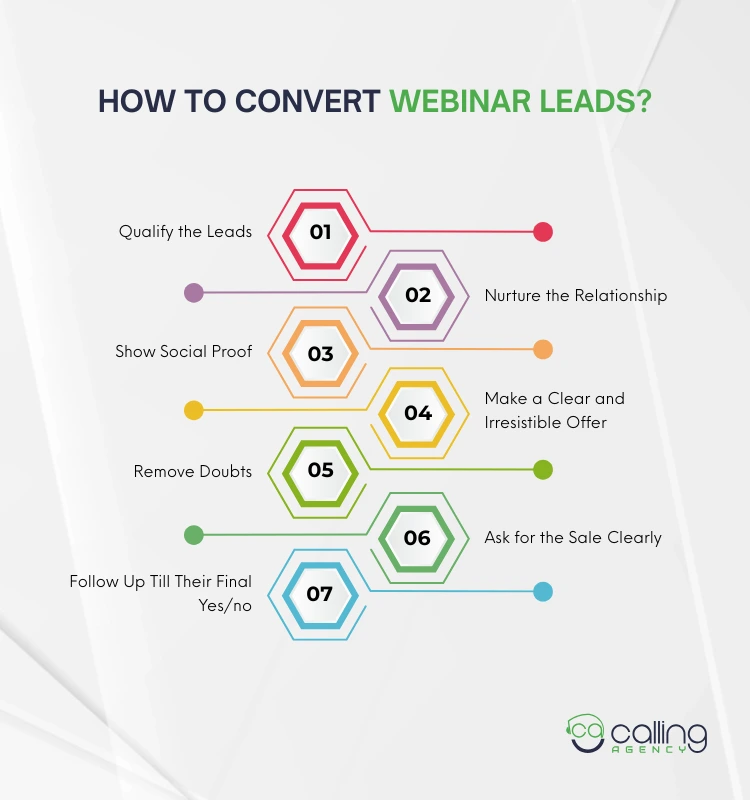
Webinar marketing doesn’t end with the events, nor does it just end up with giving you a lot of sign-ups! Rather, it plays a key role in guiding leads toward conversion.
So once you generate the lead, that means the list of your targeted people is in your hands. Now it’s time to convert them into your paying customer.
Look at the step-by-step guideline for this conversion process.
Qualify the Leads:
After your webinars, you must get several leads for your site. Okay, still not all of them are worth getting your time & effort. So-
- Ask your leads, are they interested in your product/service?
- Do they have enough budget to make this purchase?
- Do they have the authority to be the paying customer?
Use short chats, surveys, and direct calls to complete this survey Session.
Nurture the Relationship:
At first, you have to build your leads’ trust in your service or product.
To do this-
- Send Emails or WhatsApp follow-ups (but not make it too spammy)
- Offer Free value. like-tips, guides, small gifts, or discounts
- Try to make a Personal connection. Talk like a friend, not like a robot.
Show Social Proof:
People only buy those things, they are concerned about which quality and service. So to meet this purpose, use-
- Testimonials
- Customer review
- Before after photos
- Detailed case studies
- Live video/ presentation on your site.
Make a Clear and Irresistible Offer:
- Be specific, solve their asked problem.
- Offer a bonus/discount.
- Keep all things very simple and clear. Like-’ buy 1 get 2 offer’
Remove Doubts:
Many businesses lose their customers because they do not want to spend time clearing customers’ doubts. Doubt can occur for either the product or the service. however-
- Remove all of their doubts very clearly.
- Handle objections in this way-
‘It’s too expensive’ -show long-term value
‘I’ll think about it’- offer limited-time deals
‘I don’t trust’ – offer refund, cash-on-delivery, etc.
Ask for the Sale Clearly:
Don’t be shy to ask any relevant questions to your lead.
Suppose you can ask-
- Would you like to buy this, please?
- Can I book this one for you?
- What would you prefer? Cash or bank transfer?
Follow Up Till Their Final Yes/no:
Most purchases happen after a few tries! So never get tired of following up at least 5-7 times.
- Give reminder
- Friendly check-in
- Extra incentive(suppose ‘the last one piece on our hand’)
Flowchart for Lead Conversion Into a Paying Customer :
Once you get the full process, let’s see the shortcut step-by-step flowchart for making the whole process very clear and easy for you.
| Step | Description |
|---|---|
| Lead Enters Your System | — |
| Qualify the Lead? | (Interest, Budget, Authority) |
| Build Relationship | (Message, Help, Value) |
| Show Social Proof | (Reviews, Testimonials) |
| Make a Clear Offer + Bonus | — |
| Handle Objections | (Trust, Price, Timing) |
| Ask for the Sale | (Cash? Online Payment?) |
| Customer Says YES | — |
| Confirm Order & Deliver | — |
| Follow-Up for Feedback | — |
Why Choose CallingAgency for Your Webinar Strategy?
It’s because running a successful webinar is not just getting a lot of people to sign up for the registration! You can say your webinars are successful only when you get the right people to show up, engage, and take final action. At CallingAgency, we do the same. We are experts at converting cold leads into warm prospects through more personalised phone calls and timely follow-ups.
Our expert Calling team ensures that your each of your webinars are filled with potential people who really have an interest in your product/ service. That means we bring genuine customers to your site.
We combine human connection with our pick strategies so that you get better conversations, deeper engagement, and huge conversions. So, If you are tired of low-quality leads and empty webinar rooms, CallingAgency could be your upcoming smart/ good result provider partner for webinar marketing.
So what else? If you want to get higher-quality webinar leads with CallingAgency, just call us!

